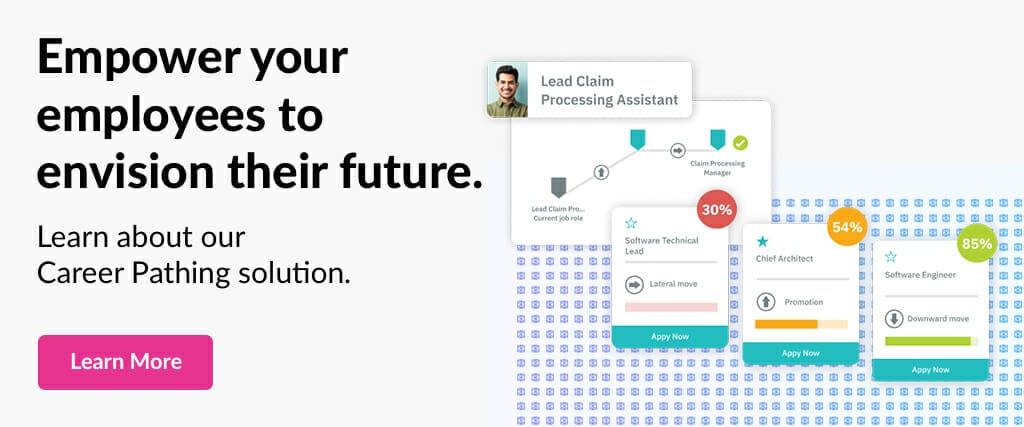Why Employee Engagement Matters to Your Customers

To keep companies growing and profitable, good customer service is extremely important. This helps ensure your ability to satisfy and retain the people who use your product or service. Research shows that having the best or most affordable product is not the main driver of keeping consumers loyal to your brand. In fact, 30% of customers are willing to pay more for excellent service. Now more than ever, consumers are ranking good customer service as one of their top factors when making a purchase decision. If your company is looking at improving your customer satisfaction, surveys of HR industry professionals show that the top recommendation is to look inward at your employee engagement rates. Forrester research reports that organizations with engaged employees have 81% higher customer satisfaction. This can also help lower your employee turnover rates by 50%. Today we will cover 3 strategies that businesses can implement to begin increasing employee engagement and the benefits to customer experience that this can bring to light.
The link between employee engagement and customer satisfaction
Having happy and engaged employees across your organization helps build the support team your customers need to feel taken care of from all sides. Engaged employees are defined as team members who are committed, enthusiastic and involved in your organization. They are driven to seek out more responsibility and opportunities within the company, have fewer absentee days and more likely to go above and beyond for their coworkers and clients. They are also more productive which helps increase profitability for the company. While your customer experience team is the main touch point for your customers, they often need information and support from other teams within the organization to do their job the best that they can. Many consumers can relate to the experience of having to work through a problem with a customer service agent who seemed less than enthused or supported in their efforts to reach an acceptable resolution. Even worse, these negative experiences can stay with customers long after the interaction has ended. All it takes is one bad customer experience for 32% of customers to “break up” with a favorite brand and 95% will tell others about a negative purchase experience. On the other hand, companies that reach a 50% employee engagement rate will end up retaining more than 80% of their customers. As we mentioned before, companies with engaged employees can lower turnaround in their organization by 50%. This number actually contributes to the high customer satisfaction numbers we see in companies with engaged employees. This is partially due to the fact that constantly having to create a connection with a new customer service agent due to employee turnover, contributes to customers having an overall negative experience. Many services require long-term customer support for implementation and if every time your customer interacts with customer success, they are presented with a new agent attached to their case, it can leave a bad taste in their mouth about the internal health of your organization.
3 Strategies to Increase Employee Engagement
Seek Out Employee Feedback
One of the easiest ways to get started with increasing employee engagement is to create more opportunities for collecting feedback on their needs and desires. This can be done through collaborative team meetings, company surveys or communication through internal talent management software. You may discover that there is something simple your organization can do to elevate roadblocks in their processes or help increase job autonomy. If it’s a reasonable request, do your best to make it a reality. This helps breed trust within your organization internally and makes your teams feel heard and respected.
Help Them Build a Future
Studies have shown that companies with career pathing programs are 6x more likely to increase employee engagement. Providing your employees with career pathing options can help increase visibility into internal opportunities for them to pursue over their career trajectory. A SHRM’s Employee Job Satisfaction and Engagement survey discovered that only 29% of employees report being “very satisfied” with their available career advancement opportunities. Employees want to be able to grow within their career and they can’t pursue advancement to new roles if they don’t know what roles are available to them. Creating a career lattice allows for employees to choose their path forward based on their individual career aspirations and goals. When these personalized career paths are aligned with business needs and goals, companies can better prepare for the future of the company as well as increase engagement in their workforce.
Provide Learning & Development Opportunities
94% of employees would stay longer at a company if it offered learning and development opportunities. As a whole, research shows that employees are putting increasing value on company-lead development programs. Not only is it a way to make your employees feel more invested in your organization, it also a way to help close internal skill gaps and upskill your teams more intentionally. Mapping out employee development plans with specific skill and learning goals can also help bring clarity to where they stand in their current position. This can allow them to have more productive performance check-ins with their managers. Creating a clearer path for your talent to develop their skills allows for an environment where employees feel more engaged at work.
While increasing your workforce’s engagement levels can seem like a daunting task, implementing just one of these talent management initiatives can help increase rates of employee engagement. This is the first step to begin to see the positive affects it can have on your customers’ experience and overall brand reputation. When employees feel connected to the work that they are doing and see that their organization is invested in both their development and career futures, retention for both employees and consumers increases. In long-term or face-to-face customer service interaction, this allows for agents and customers to create a consistent, positive relationship with each other over the entire consumer lifecycle. Investing in an employee engagement strategy can also lead to increased employee productivity and therefore business profitability. In addition, 84% of companies who create a strategy for improving their customer satisfaction report an increase in revenue. Your customers take note of the environment that you cultivate inside your organization and implementing plans that put people first helps set your company up for long-term brand loyalty and overall business success.
Benefits of Supporting Your Employees’ Career Aspirations
Benefits of Supporting Your Employees’ Career Aspirations Supporting employees’ career aspirations can significantly boost engagement and retention. High-performing employees who consistently meet deadlines, ask for more responsibility, and seek feedback are often driven by clear career goals. However, many employees with similar ambitions may feel unsure about how to progress or uncomfortable vocalizing their goals. […]
Support an Adaptive Workforce During Times of Change
Support an Adaptive Workforce During Times of Change As we move forward in this disruptive period in time it is clear that companies need to adapt with the changes or run the risk of being left behind. Many businesses have changed the way they work, are developing new policies for where their employees will work, […]
Career Path Development Journey Starts Here
Your career path development journey starts here. A common reason an employee will leave for a competitor is lack of career progress. An explanation for this fact is that employees desire to be a part of something that will inspire them to think about a destination ahead. Just the simple thought of progress toward that destination will spark […]




